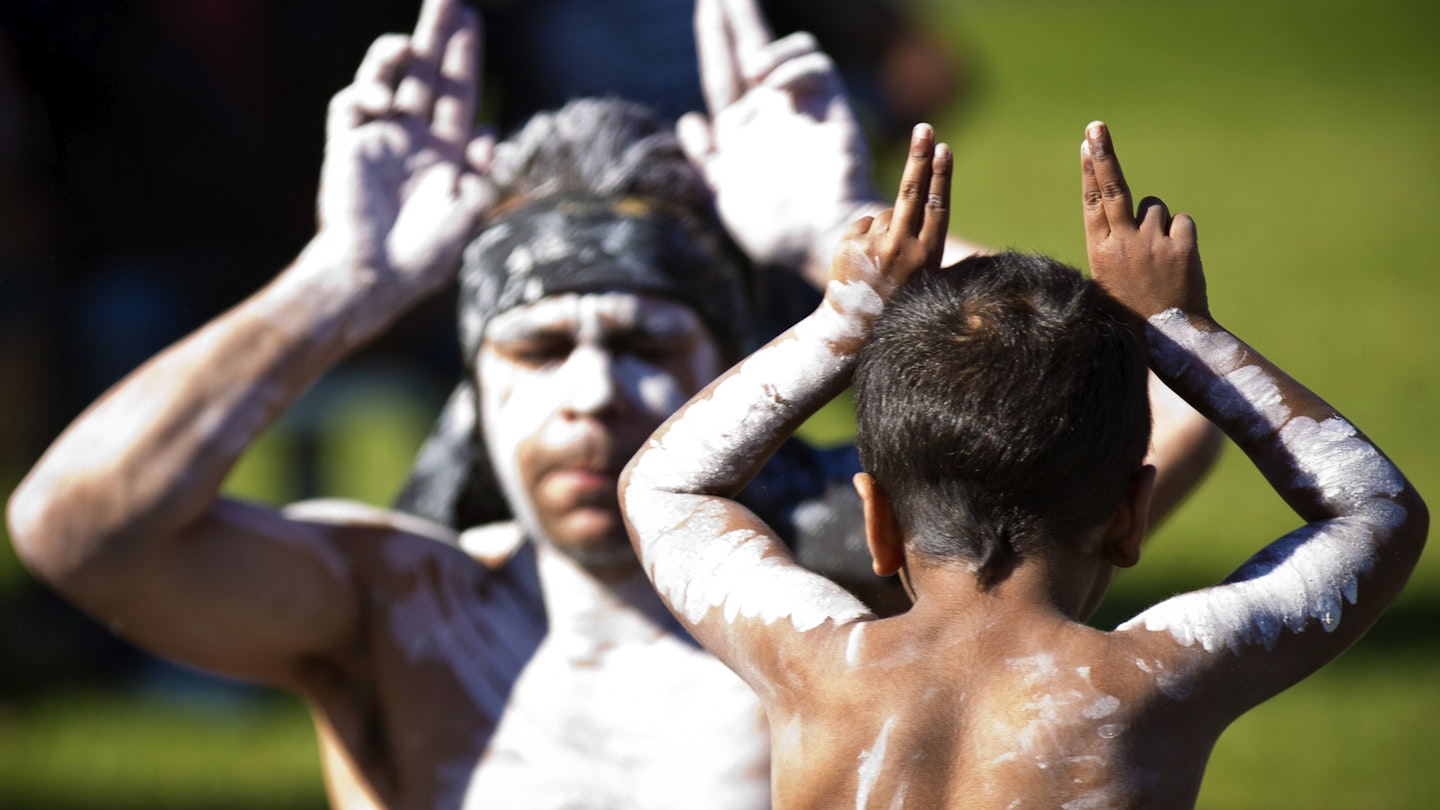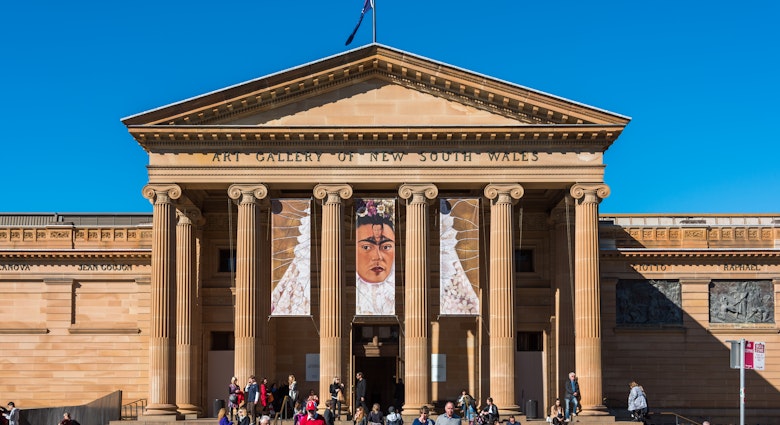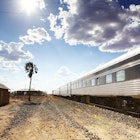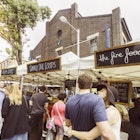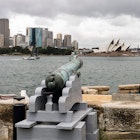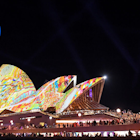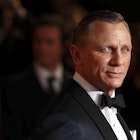Modern Australia is unflinchingly contemporary, but the land itself is ancient in geologic terms, with an Aboriginal history arcing back more than 50,000 years. You may think the best place to experience Aboriginal Australia is in the central deserts, Kakadu National Park or Arnhem Land, but Aboriginal Culture is the oldest living culture in the world, and as the times changed Aboriginal people have adapted whilst staying true to their unwavering connection to this land.

In Sydney
The British knew they were onto a good thing when the sailed into Sydney Harbour: fertile, protected and gorgeous to look at, this storied waterway is home to the traditional custodians Cadigal (also transliterated as Gadigal) people for millennia. The Sydney area is made up of 29 clan groups of the Sydney metropolitan area, referred to collectively as the Eora Nation.
The world famous Sydney Opera House sits on a significant site to the Cadigal People of the Eora Nation, known as Bennelong Point. In Cadigal/Gadigal language, it is known as ‘Dubagullee’. Bennelong Point was a significant meeting place for the local Aboriginal people and was named in honour of Bennelong, a Wangal man. Bennelong, along with two other Aboriginal men were captured by Phillip and his men in order to communicate with the locals. While the other two Aboriginal men, Colebee and Arabanoo escaped their capture, Bennelong was interested in learning about the colonisers and decided to stay on. He developed close relationships with a number of officers, especially Governor Phillip, relationships he maintained after fleeing the settlement, some seven months after his capture'.
For an excellent overview of Sydney’s Indigenous history sign up for a cultural tour with Tribal Warrior, a two-hour harbour cruise stopping at Goat Island for a cultural performance and a guided walk; or the Sydney City Dreaming (iwaratravel.com.au) tour with Aunty Margaret Campbell, a 90-minute leisurely walkabout, in The Rocks in Sydney’s central business district, and learn more about the Aboriginal people's spiritual connection to the adjoining waterways and foreshores.

For something less structured, wander up onto the sea-breezy clifftops at the Bondi Golf Club (beware flying golf balls!) where there are some amazing old aboriginal rock engravings grooved into the sandstone. It’s estimated there are around 600 similar sites across Sydney – a veritable outdoor gallery. You’ll find some better-preserved examples along the Bondi to Bronte walk.
Back in the city centre, behind a classical facade, the Art Gallery of NSW plays host to estimable touring exhibitions plus an impressive Aboriginal and Torres Strait Islander art collection including paintings, installations, weaving and photography. If you want to buy some Aboriginal art while you’re in Sydney, skip the lacquered boomerangs and plastic key rings in tourist shops and visit Circular Quay which hosts a number of Aboriginal street performers and street artists.
Finally, if your timing is good (and your wallet can stand the heat), you might catch the Bangarra Dance Theatre in action – the pinnacle of Australian Aboriginal dance performance, often performing at the Sydney Opera House. After the show, wander out to the end of Bennelong Point, gaze past the great white sails of the Opera House and try to imagine shimmering Sydney Harbour before the British arrived.
In Melbourne
Like the Royal Botanic Garden in Sydney, Melbourne’s Royal Botanic Gardens hosts Aboriginal Heritage Walks with Indigenous guides, checking out regional aboriginal food, tools, medicine and customs. The gardens remain an important ancestral site for local Indigenous people.
Not far from the Royal Botanic Gardens is the Shrine of Remembrance, from where there’s a terrific view of somewhat controversial Swanston Square, an apartment building with an image of 19th-century Aboriginal leader William Barak wrapped around its facade. An artist, social progressive and elder of the Wurundjeri-willam clan, Barak engaged the colonial government of his time in a bid return land to his people.
If it’s raining (…it happens in Melbourne), swing by at the Bunjilaka Aboriginal Cultural Centre at the Melbourne Museum to see the First Peoples exhibition. With language, artefacts and contemporary artworks at the fore, displays here focus on the stories of Victoria’s Koorie people. A highlight is the ‘Deep Listening Space’, where Indigenous Victorians of all ages speak about their community, identity and culture.
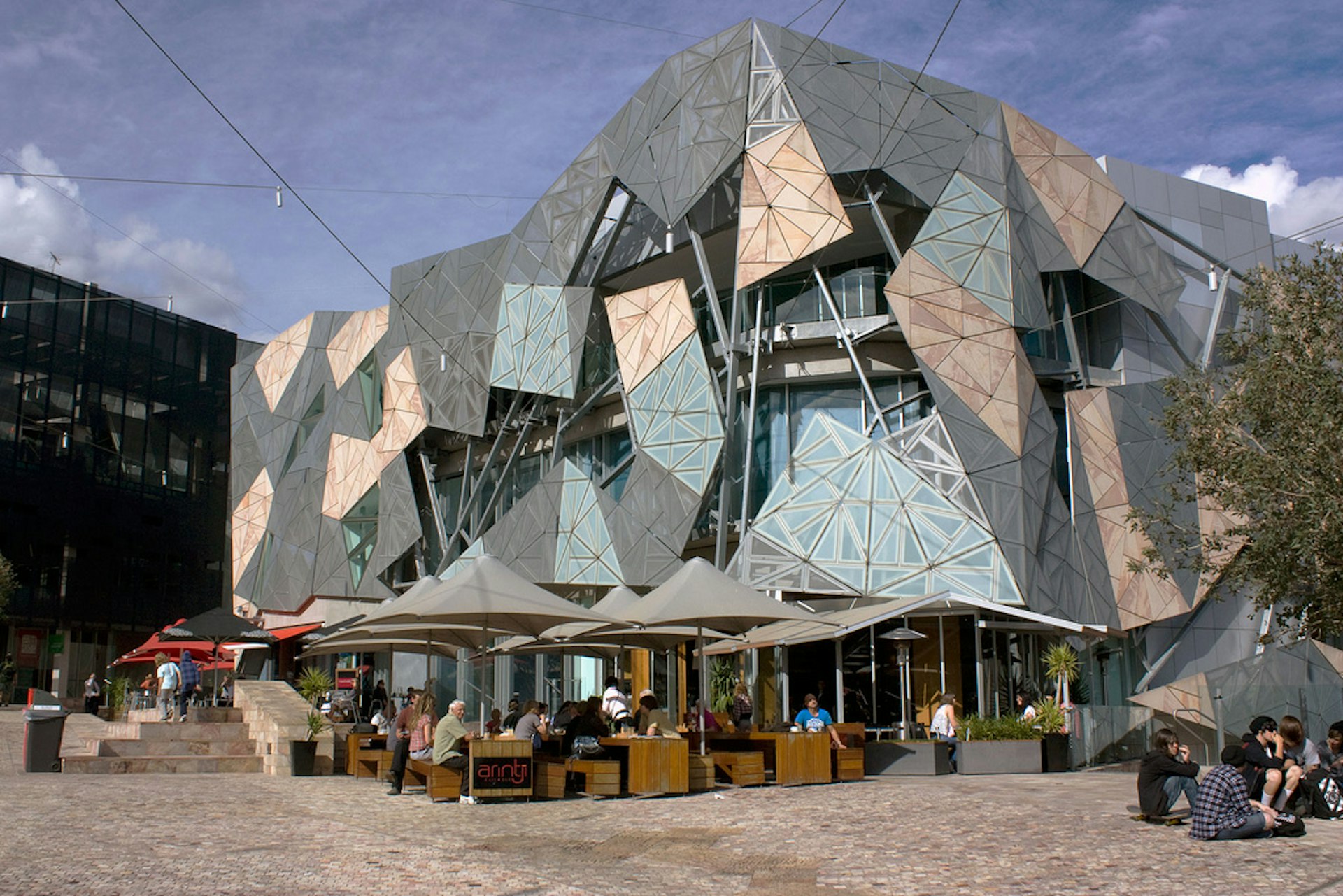
Melbourne is also a top spot to see Aboriginal art. At downtown Federation Square, the Ian Potter Centre: NGV Australia has a permanent Aboriginal art exhibition on the ground floor, with engaging use of media from bark and didgeridoos to contemporary sculpture and canvas dot paintings.
Also at Fed Square, the Koorie Heritage Trust is an Aboriginal-owned and managed organisation, delivering authentic and immersive urban Aboriginal arts and cultural experiences. Expect gallery exhibitions, artefacts, oral history and regular guided walks along the Yarra River.
Hungry yet? Head to old Fitzroy just north of the CBD for dinner at Charcoal Lane, one of the best places in Australia to get some native flora and fauna on your plate. Menu hits include kangaroo burgers, bush tomato chutney, wallaby tartare, yam fritters, wild barramundi…it’s fine dining with fine native ingredients.

Best of the Rest
For an Indigenous art infusion in the other big Australian cities, don’t miss the eye-popping Tiwi Islands carvings and Arnhem Land bark paintings at Darwin’s Museum & Art Gallery of the Northern Territory; and an interactive insight into local Kaurna culture at Adelaide’s Tandanya National Aboriginal Cultural Institute. Also in Adelaide you can book a half- or full-day cultural tour of Kaurna country with Bookabee Tours.
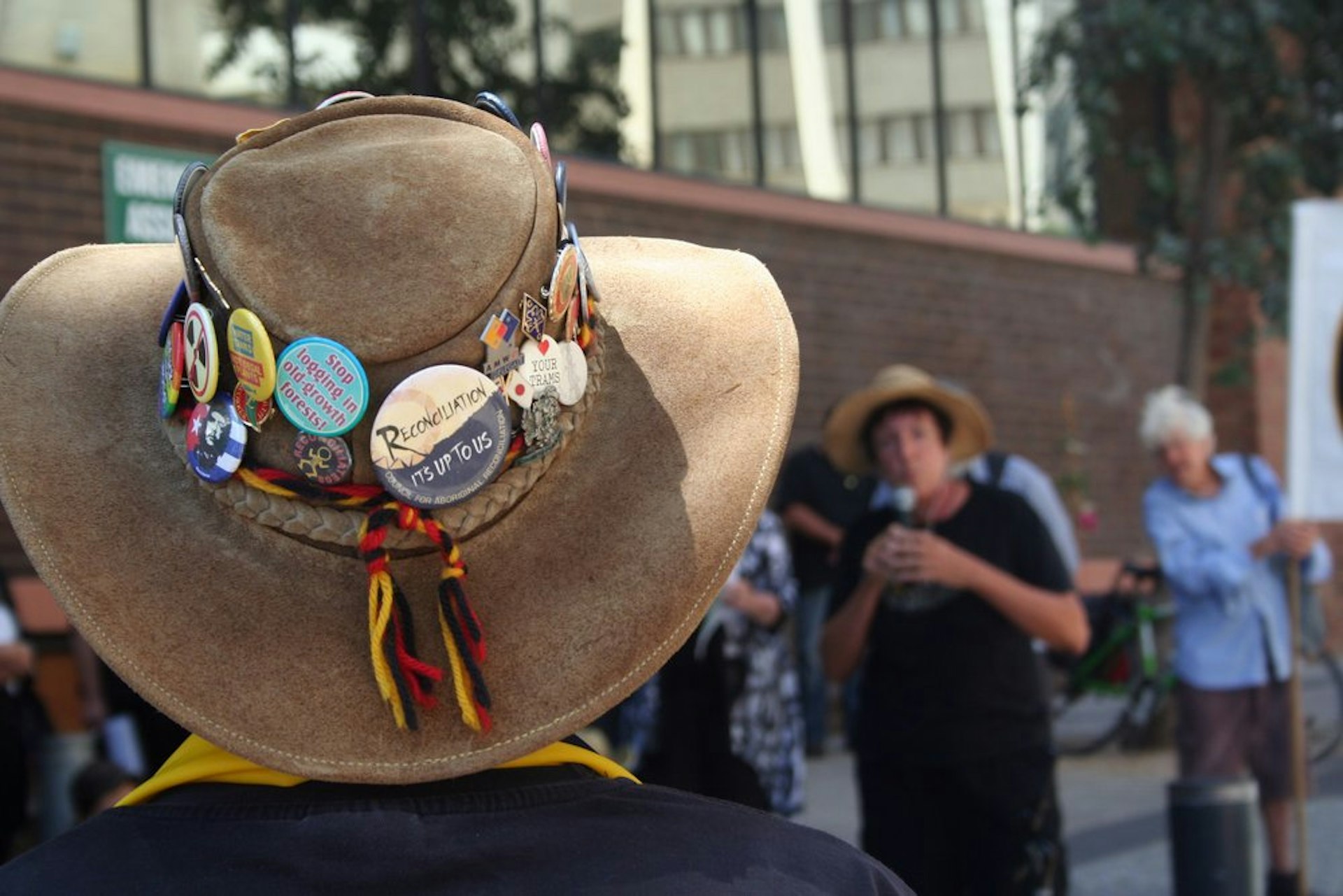
Down on the waterfront in Hobart, the Tasmanian Museum & Art Gallery gives Tasmania’s fascinating (and tragic) Aboriginal history a potent rendering, both prior to and post white colonisation. Meanwhile in Canberra, the ongoing struggle Indigenous Australians face for land rights recognition and social equality plays out on the lawns of Old Parliament House at the Aboriginal Tent Embassy – a semi-permanent congregation of tents occupied by protesters.
To get a full Indigenous culture injection the Indigenous community put their culture on show through many colourful festivals and events held in every state and territory. Ranging from one day events to week-long adventures with programs including everything from fashion, sport to music and art to food. For more information see Australia.com.
With thanks to Steven Satour, a Yankunytjatjara and Pitjantjatjara man from Central Australia with family ties to NSW, who now works in tourism in Sydney. To find out more about urban tours offered in go to Iwara Travel (iwaratravel.com.au).
